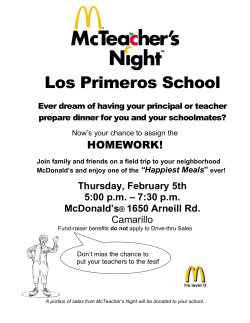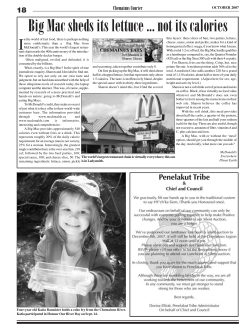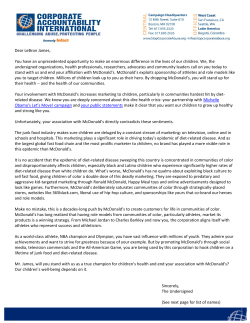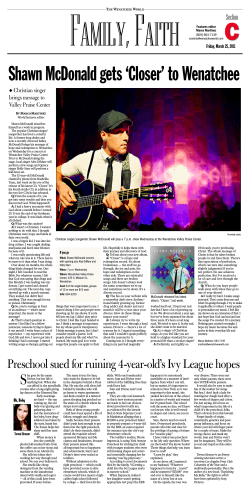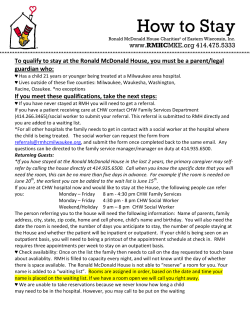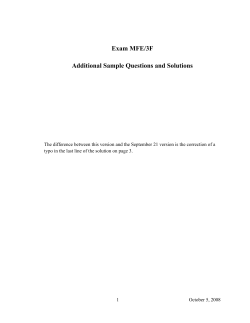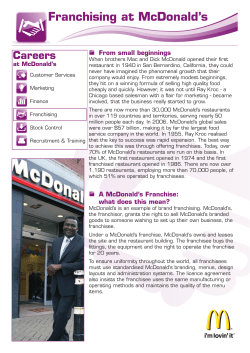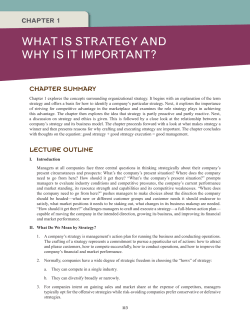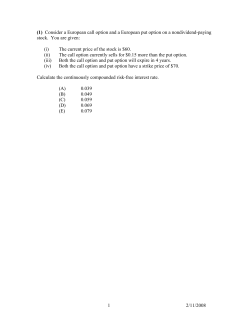
Sample Paper: Analyzing a Visual (Lee)
Sample Paper: Analyzing a Visual (Lee) Lee 1 Albert Lee Professor McIntosh English 101 4 November XXXX The Golden Arches Go Green: McDonald’s and Real Lettuce Dominating a McDonald’s advertisement in the July-August 2004 issue of Men’s Health magazine is a highly magnified head of lettuce, the centerpiece of a new healthful menu that McDonald’s promoted during the summer. The lettuce looms over the ad’s two Lee summarizes the content of the ad. other elements, a comment card from a smiling female customer with a question about lettuce and a friendly note in reply from McDonald’s. For a restaurant chain known for its supersized meals of Double Quarter Pounders with Cheese, the close-up of a lettuce leaf might come as a surprise. A superficial interpretation of the McDonald’s ad would point out that the fast-food giant is attempting to remake its image into a health-conscious restaurant. Lee suggests a simple interpretation to highlight his more compelling interpretation. After all, the greening of the Golden Arches follows a shift in public attitudes toward diet and a sometimes environmentally unfriendly food industry. Less obvious are the associations that the ad creates to persuade people that McDonald’s is committed to a product—an entire experience—not usually offered by fast-food restaurants. If fast food has become synonymous in many consumers’ minds Lee’s thesis offers his analysis of the ad’s message. with the impersonal and artificial conditions of modern life—from assembly-line food to robotic exchanges at the counter or drivethrough window—then the McDonald’s ad seeks to replace those associations with images of authenticity and familiarity. The ad’s underlying message emphasizes for viewers the real Marginal annotations indicate MLA-style formatting and effective writing. Source: Diana Hacker (Boston: Bedford/St. Martin’s, 2006). This paper has been updated to follow the style guidelines in the MLA Handbook for Writers of Research Papers, 7th ed. (2009). Lee 2 over the artificial, a quality in both McDonald’s food and its relationship with its customers. Through vivid graphics McDonald’s shows, rather than tells, viewers that its ingredients are wholesome. Lee describes the dominant image in the visual text. The head of lettuce that creates the ad’s entire background is the picture of mouth-watering wholesomeness. Enlarged to many times its natural size, the lettuce reveals its sharp, spring-green edges and beads of water standing on its leaves, presumably from recent washing. The fast-food chain could have bombarded the public with nutritional statistics about its food items, as many other restaurants do, but it seems to recognize that numbers can begin to read like cold data from a science textbook. Instead, McDonald’s invites us to take a closer look at its ingredients, a chance to Lee quotes words from the text. verify for ourselves that the lettuce is as “pure” and “fresh” as it claims. The lettuce does in fact look “so crisp” that we can easily believe it would produce a “crunch” if we bit into it, just as McDonald’s reports. Clear topic sentence announces a shift to a new topic. The ad’s copy suggests that McDonald’s wishes to convince viewers that its commitment to serving customers’ needs is as genuine as its lettuce. The prominent repetition of the word real in the tagline expresses McDonald’s policy of plain dealing with individual customers. The picture of a supposedly real customer, a paper clip holding her photograph, and the ragged left edge of the comment card all contribute to a sense that this exchange between customer and McDonald’s is as real, as “pure,” as McDonald’s claims its lettuce is. Lee analyzes the ad’s language. Indeed, the heading to the comment card, “Ask M,” gives McDonald’s a personal identity, which intensifies the impression of the company’s accessibility. “Ask M” conjures up the image of a Source: Diana Hacker (Boston: Bedford/St. Martin’s, 2006). Lee 3 straight-shooting, small-town newspaper advice columnist. McDonald’s lettuce, “M” says, comes “from the same place you buy yours.” This comparison with the neighborhood market emphasizes the local presence of the restaurant by association. The lettuce we eat at McDonald’s, the ad suggests, is in fact the very same we would feel confident putting on our family’s plate at home. The opening phrase of the second sentence, “Simply put,” is a signal that McDonald’s earnestly desires to explain its operations to its customers. As with the close-up of the lettuce, the wording suggests that the company has nothing to hide. It might be difficult to imagine that people will be persuaded to abandon their local markets for McDonald’s. But then again, we cannot easily forget the ad’s image of lettuce, its curling, serrated edges and finely branched veins, enlarged to a slightly unsettling size. And if this green image conjures up in our minds a golden “M”—a place where we can reconnect with real people and the bounty of the land—then maybe one of the most successful companies in history has done it again. Source: Diana Hacker (Boston: Bedford/St. Martin’s, 2006). Lee concludes with his interpretation of the ad’s overall effect. Lee 4 Work Cited McDonald’s Corporation. Advertisement. Men’s Health July-Aug. 2004: 95. Print. Source: Diana Hacker (Boston: Bedford/St. Martin’s, 2006).
© Copyright 2026
